Branding your multifamily emails: Everything you need to know
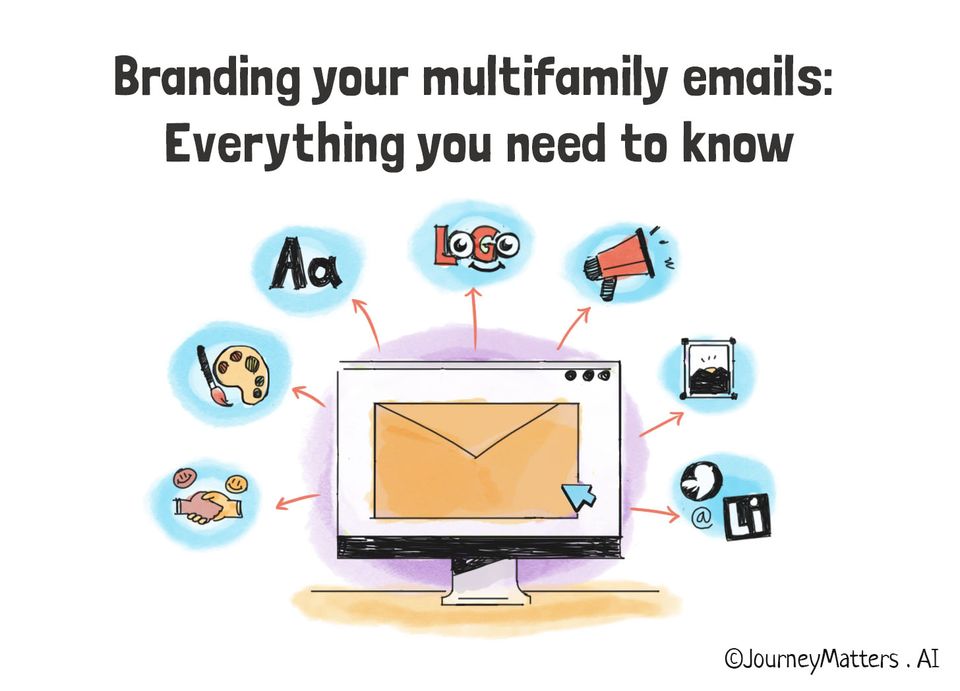
Summary
90% of potential customers expect consistent brand experiences across platforms.[1] This can be achieved through a brand style guide that describes a company's visual identity. It establishes guidelines for official logo usage, font type, color palette, typography, and tone.
Once your property brand guide is ready, it must be followed across all your marketing collateral, including your emails. This is an excellent way to build trust among your prospects and residents, which leads to long-term relationships.
This article will answer the what, why, and how of Email Branding:
- What is Email Branding?
- Why do you need Email Branding?
- How can you brand your Emails?
What is Email Branding?
Email branding is the process of communicating a brand identity through your emails by standardizing brand elements like your copy, images, logo, tone, etc.
Consumers read emails for about ten seconds on average[2], so you only have a small window of opportunity to make a good first impression.
Here’s what a branded email looks like:
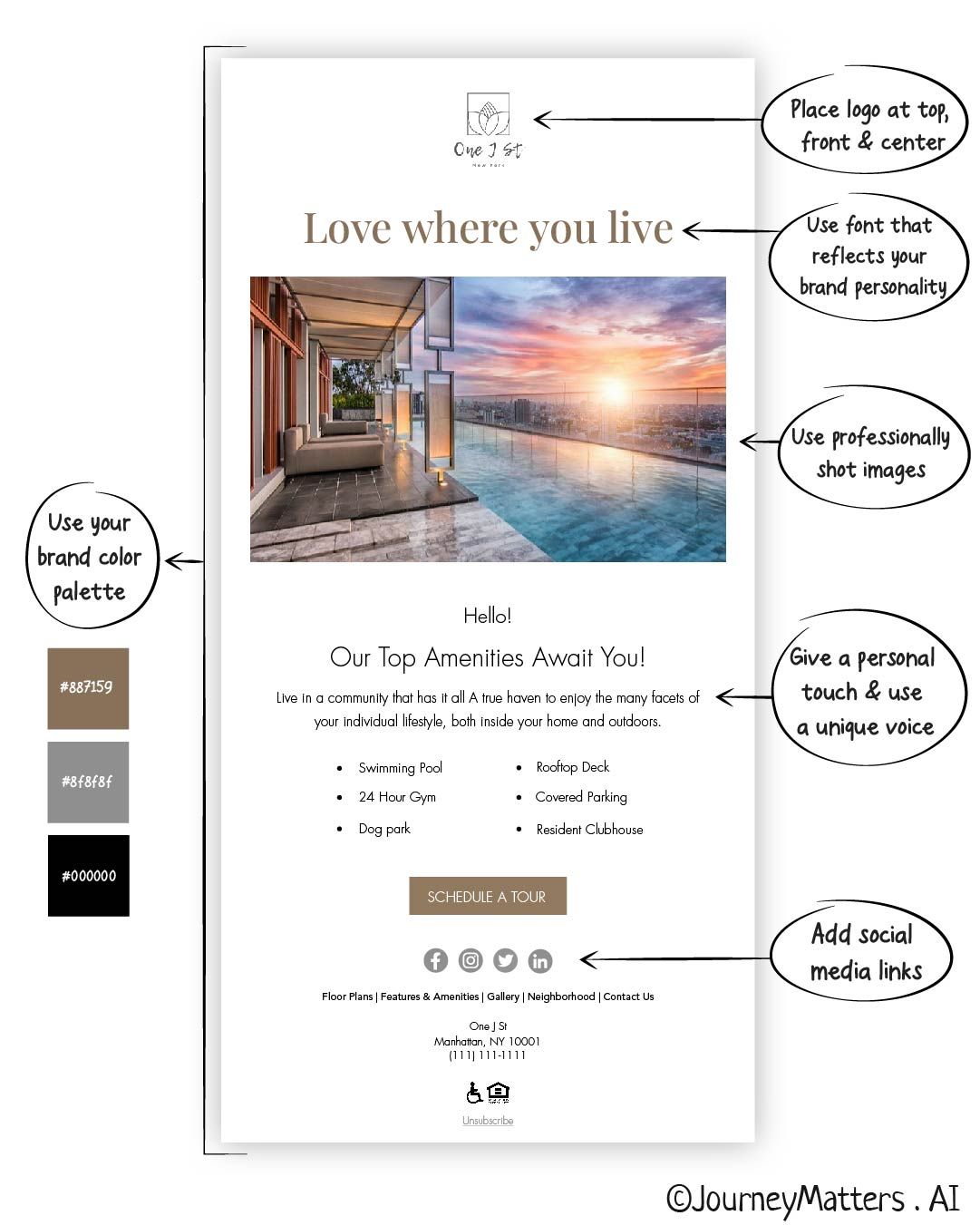
Why do you need Email Branding?
59% of respondents in a survey said marketing emails influence their purchase decisions[3]. This clearly tells how important email marketing is for a business. But the recognition in email marketing is achieved through branding your emails.
Here are three reasons why you need Email Branding:

1. It increases credibility
Trust remains a vital currency in sustainable customer relationships. A survey of 1,000 consumers concluded that more than 80% consider trust a deciding factor in their buying decisions.[4]
Email branding helps in building trust by creating consistent experiences for your customers. According to Forbes, 69% of U.S. consumers shop more with brands that offer consistent experiences in-store and online.[5]
2. It improves the ROI
When it comes to ROI (Return On Investment), email marketing continues to be at the top. On average, businesses make $36 from email marketing for every dollar spent.[6]
Keeping the power of emails in mind, you must use your branding guidelines across all your marketing collateral, including emails, which can increase your revenue by as much as 23%.[7]
3. It helps you stand out
Email branding gives you a unique voice and style, which helps your prospects immediately identify you in the crowd.
Research shows that 61% of shoppers are more likely to buy products and services from brands with a unique voice.[8]By bringing your unique voice, your property brand becomes more recognizable, which increases the chance of prospects considering you as one of their first choices.
How can you brand your Emails?
It might seem overwhelming to consider all the factors that go into creating your property’s email branding strategy. We've compiled a list of seven actionable tips to help you get started with email branding:
1. Use your brand color palette
- Your palette helps your audience to identify your brand at a glance.
- According to Forbes, color increases brand recognition by 80%[9].
- It is important to select a color palette that helps you deliver your message clearly to the prospects and residents.
You will see how the email below uses the same black and brown color palette which is used on their website:
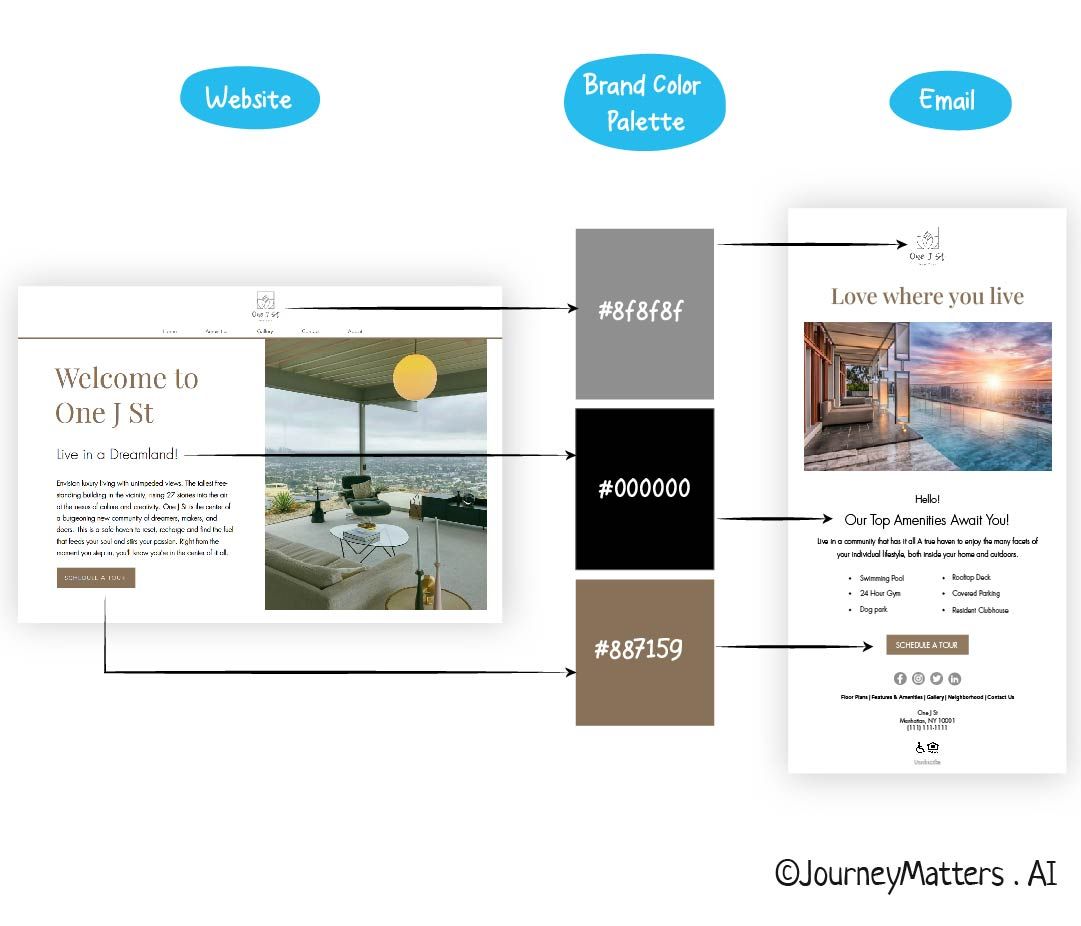
What is their motive behind choosing this palette?
Black and brown are two neutrals that complement each other to create a sophisticated look. Brown is also associated with warmth and reliability, whereas black is known for its elegance and timelessness.
By using this color palette, One J St, a modern luxury property brand, has given a welcoming, dependable, and luxurious personality to their email, which is what their brand stands for.
2. Add your property logo — top, front, and center
- The logo acts as a signature and a stamp of identity for the brand.
- Placing your logo at the top front and center establishes the hierarchy of your email, as it serves as your brand's primary identifier.
Check how the logo of the property “One J St” is placed right at the top of the email, which helps them build their brand identity.
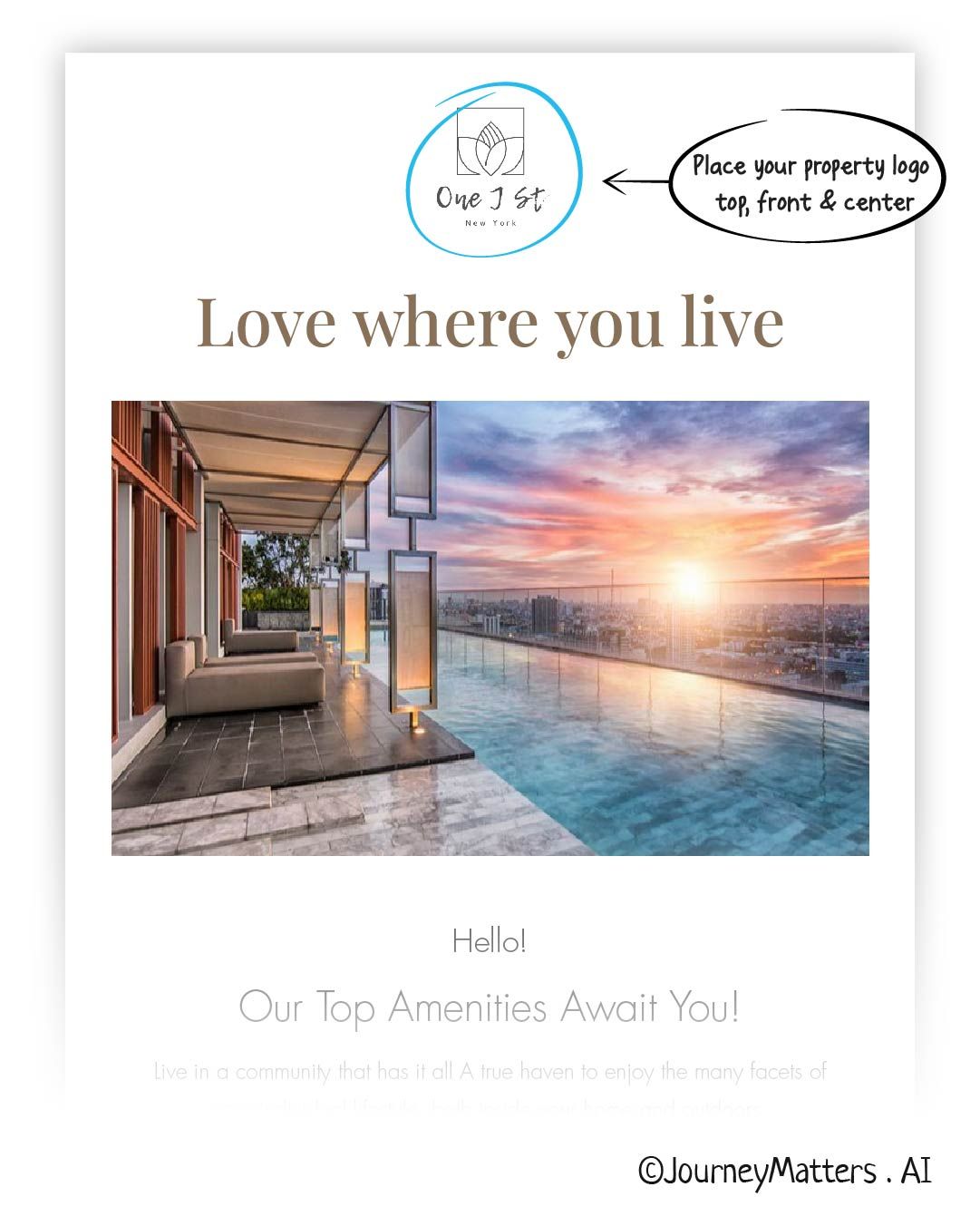
3. Use fonts that reflect your brand personality
- Fonts have a personality of their own. Make sure the personality of your brand matches that of the font you choose.
- Select simple and legible fonts that captivate the reader without interfering with their ability to read the text.
- Use the same font consistently in all emails.
Take the example of One J St, which is a modern luxury property brand, and it's reflected in its font choice. They use Playfair Display (Serif font) for headings, Futura (Sans Serif font) for subheadings & body, and Avenir (Sans Serif font) for the website sections.
While Serifs are known to be traditional and trustworthy, Sans Serifs are minimal and modern. Therefore, they reflect what modern luxury stands for, which is minimalism and elegance.
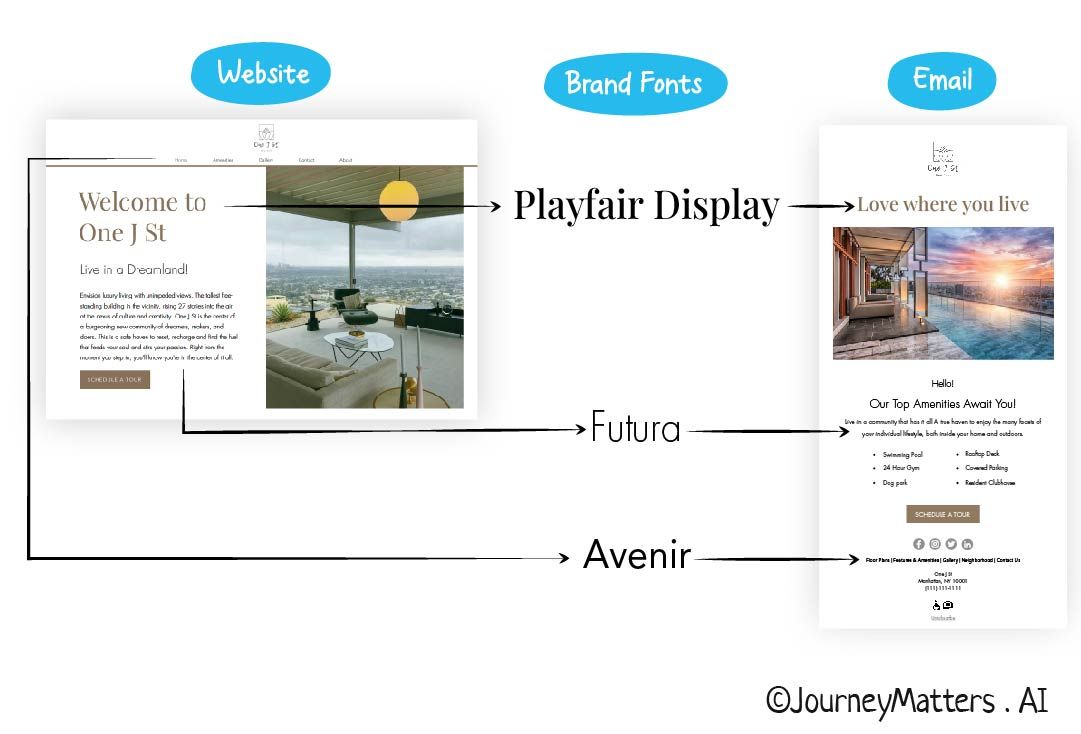
4. Use professionally shot images
- Get a professional to shoot your property images and use them because a picture really is worth a thousand words.
- Approximately 50% of recipients are using their mobile devices to view email[10], so your image design should be mobile-first.
Take a look at the email below. They have used a single-column email layout which is considered mobile-friendly. The size of the image used in this layout is 600*340 pixels. The most optimal email template width is also considered to be 600 pixels.

5. Use your unique brand voice
- Your copywriting voice gives you a recognizable style. It expresses your personality and reinforces your brand.
- Just as you want uniformity in your design, you want the same in your tone of voice.
You can see below how One J St always uses a friendly tone to convey its message. They speak with clarity and paint a vivid picture of the experience at their property.
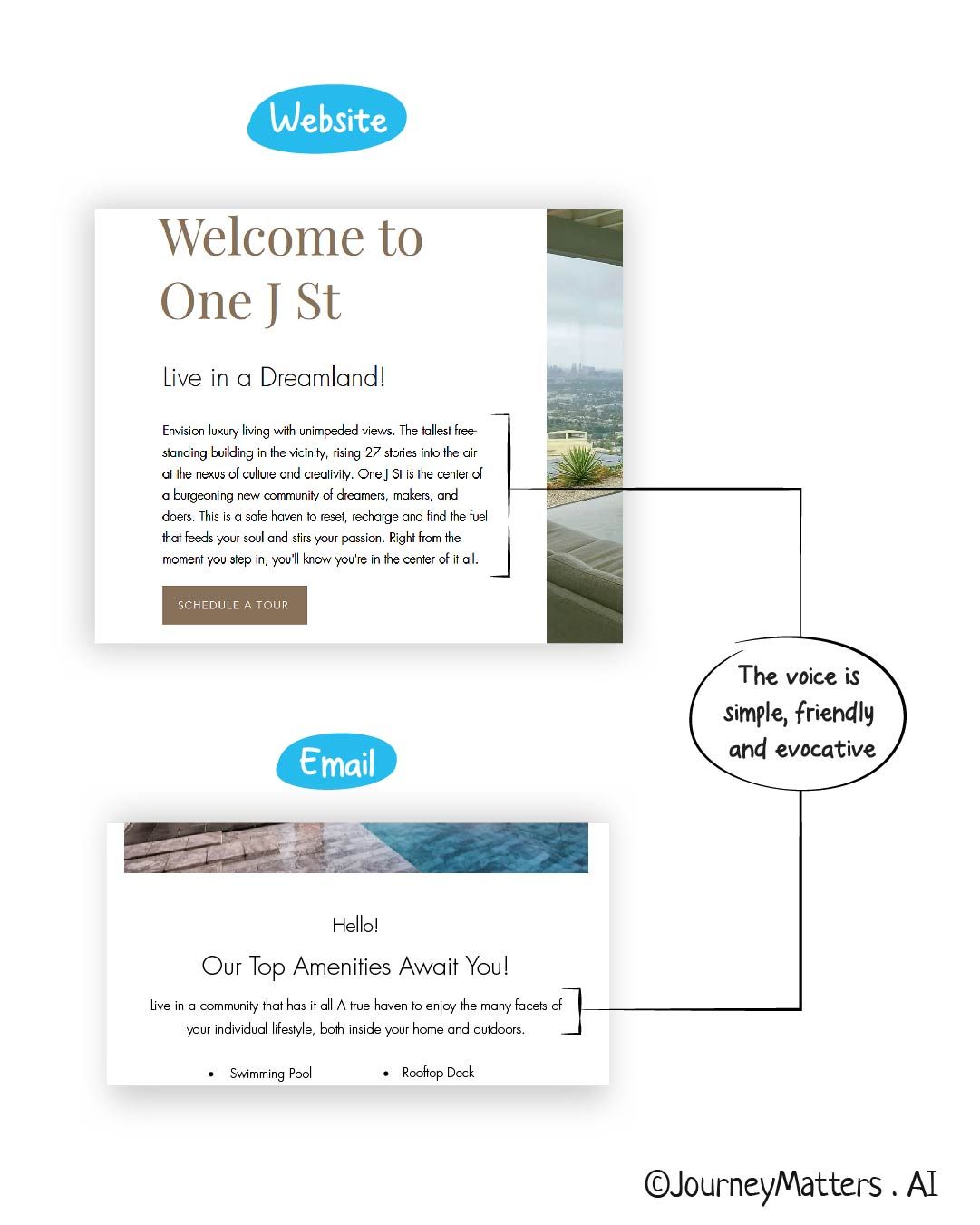
6. Add a personal touch
- Use first-person plural and second-person pronouns (“we”/”us” and “you”), where appropriate. This engages your reader in a direct and human way.
- 71% of consumers say a personalized experience would influence their decision to open and read brand emails[11].
Check how the email below gives a personal touch by using the words “You” and “Your”:
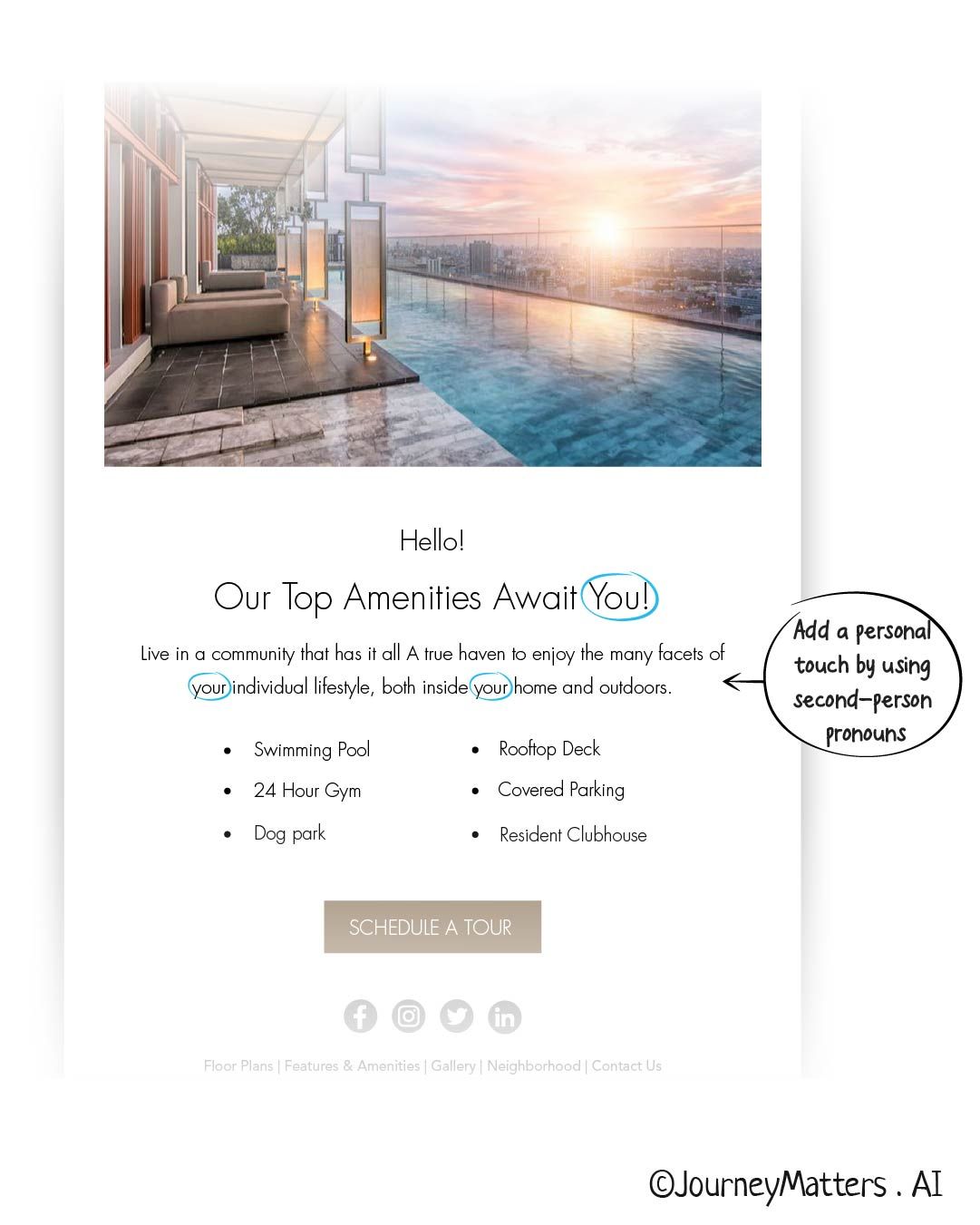
7. Add your social media links
- Your subscribers will be able to see you on a variety of platforms and will be convinced that you are a credible source.
- According to Hyly.AI’s Data Science team, most property emails have more non-CTA clicks than CTA clicks. Including social media links increase the chances of your audience engaging with your emails.
You can add your social media links in the footer of your email like this:
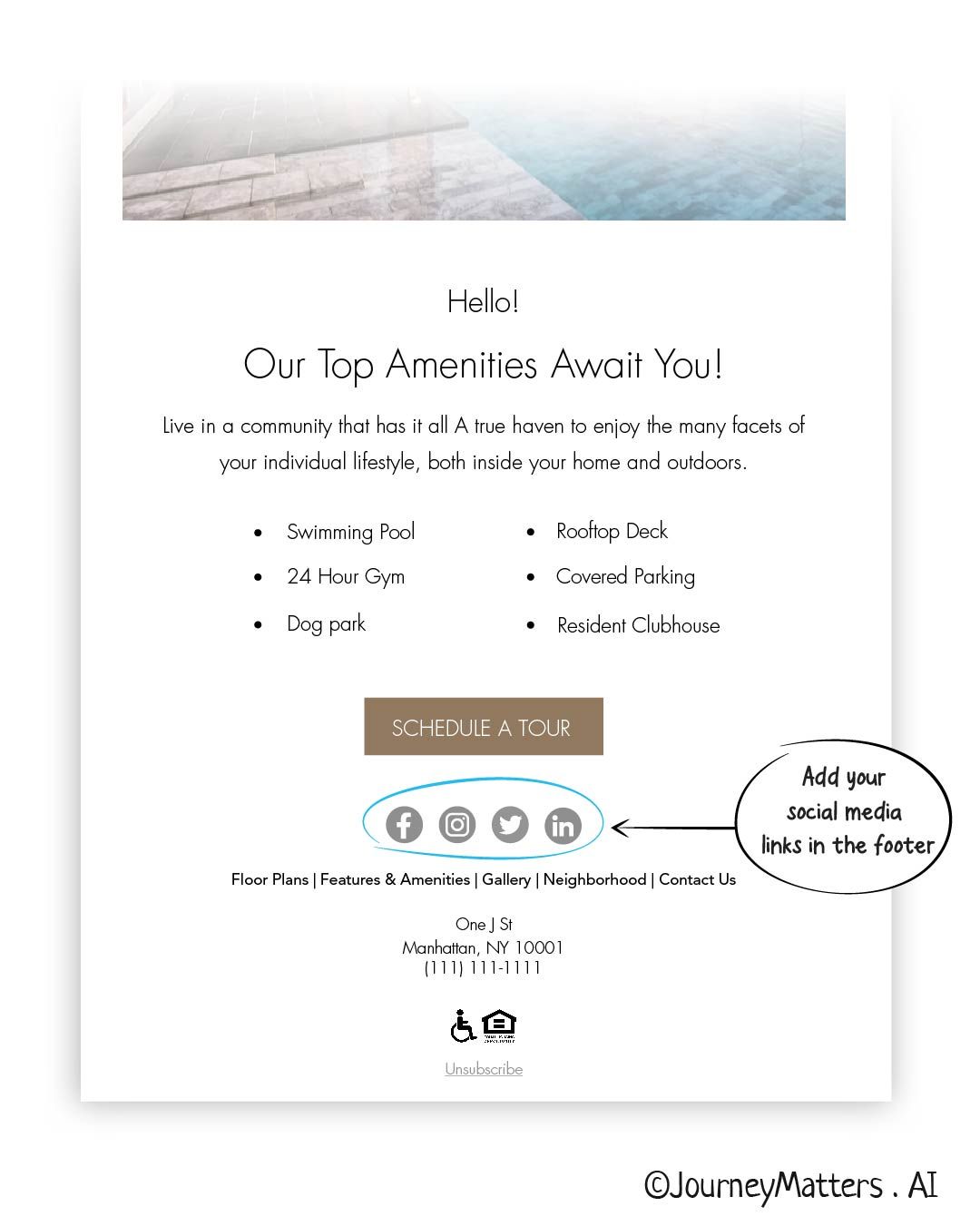
Conclusion
Personalization, uniformity, and consistency are the key elements that help you build your unique identity through email branding, and with these suggestions in hand, you are set to create one-of-a-kind branded emails.
Time for some feedback. Did we miss an important lesson? Did we mess up on a concept? Help us improve these lessons so everyone in multifamily can benefit.
Resources
- 90% of potential customers expect consistent brand experiences across platforms (Crowdspring)
- Consumers read emails for about ten seconds on average (Statista)
- 59% of respondents in a survey said marketing emails influence their purchase decisions (Hubspot)
- More than 80% consider trust a deciding factor in their buying decisions (The Drum)
- 69% of U.S. consumers shop more with brands that offer consistent experiences in-store and online (Forbes)
- On average, businesses make $36 from email marketing for every dollar spent (Litmus)
- Consistent brand presentation across all platforms increases revenue by up to 23 percent (Forbes)
- 61% of shoppers are more likely to buy products and services from brands with a unique voice (Smallbizgenius)
- Color improves brand recognition by up to 80 percent (Forbes)
- Approximately 50% of recipients are using their mobile devices to view email (Skidmore)
- 71% of consumers say a personalized experience would influence their decision to open and read brand emails (Forbes)

Member discussion